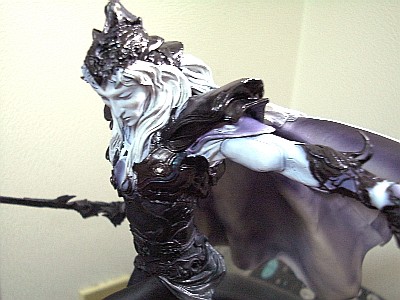Coming Soon to a Military Near You:
Mind Control?

Now take off your top and call me 'daddy'...
Remote Control Device 'Controls' Humans
from The Associated Press
ATSUGI, Japan - We wield remote controls to turn things on and off, make them advance, make them halt. Ground-bound pilots use remotes to fly drone airplanes, soldiers to maneuver battlefield robots.
But manipulating humans?
Prepare to be remotely controlled. I was.
Nippon Telegraph & Telephone Corp., Japans top telephone company, says it is developing the technology to perhaps make video games more realistic. But more sinister applications also come to mind. I can envision it being added to militaries' arsenals of so-called "non-lethal" weapons.
A special headset was placed on my cranium by my hosts during a recent demonstration at an NTT research center. It sent a very low voltage electric current from the back of my ears through my head — either from left to right or right to left, depending on which way the joystick on a remote-control was moved.
I found the experience unnerving and exhausting: I sought to step straight ahead but kept careening from side to side. Those alternating currents literally threw me off.
The technology is called galvanic vestibular stimulation — essentially, electricity messes with the delicate nerves inside the ear that help maintain balance.
I felt a mysterious, irresistible urge to start walking to the right whenever the researcher turned the switch to the right. I was convinced — mistakenly — that this was the only way to maintain my balance.
The phenomenon is painless but dramatic. Your feet start to move before you know it. I could even remote-control myself by taking the switch into my own hands.
There's no proven-beyond-a-doubt explanation yet as to why people start veering when electricity hits their ear. But NTT researchers say they were able to make a person walk along a route in the shape of a giant pretzel using this technique.
It's a mesmerizing sensation similar to being drunk or melting into sleep under the influence of anesthesia. But it's more definitive, as though an invisible hand were reaching inside your brain.
NTT says the feature may be used in video games and amusement park rides, although there are no plans so far for a commercial product.
Some people really enjoy the experience, researchers said while acknowledging that others feel uncomfortable.
I watched a simple racing-car game demonstration on a large screen while wearing a device programmed to synchronize the curves with galvanic vestibular stimulation. It accentuated the swaying as an imaginary racing car zipped through a virtual course, making me wobbly.
Another program had the electric current timed to music. My head was pulsating against my will, getting jerked around on my neck. I became so dizzy I could barely stand. I had to turn it off.
NTT researchers suggested this may be a reflection of my lack of musical abilities. People in tune with freely expressing themselves love the sensation, they said.
"We call this a virtual dance experience although some people have mentioned it's more like a virtual drug experience," said Taro Maeda, senior research scientist at NTT. "I'm really hopeful Apple Computer will be interested in this technology to offer it in their iPod."
Indeed, a small defense contractor in Texas, Invocon Inc., is exploring whether precisely tuned electromagnetic pulses could be safely fired into people's ears to temporarily subdue them.
NTT has friendlier uses in mind.
But from my experience, if the currents persist, you'd probably be persuaded to follow their orders. And I didn't like that sensation. At all.








 what the Great Conjunction is. 'What's the Great Conjunction?'
what the Great Conjunction is. 'What's the Great Conjunction?' 




 A Is for Androids
A Is for Androids B Is for Boba
B Is for Boba C Is for Calvin
C Is for Calvin D Is for Dragons
D Is for Dragons E Is for Elric
E Is for Elric F Is for Futures
F Is for Futures G Is for Genie
G Is for Genie H Is for Hobbits
H Is for Hobbits I Is for Iceman
I Is for Iceman J Is for Jedi
J Is for Jedi K Is for Kraken
K Is for Kraken





































































0 Comments:
Post a Comment
<< Home